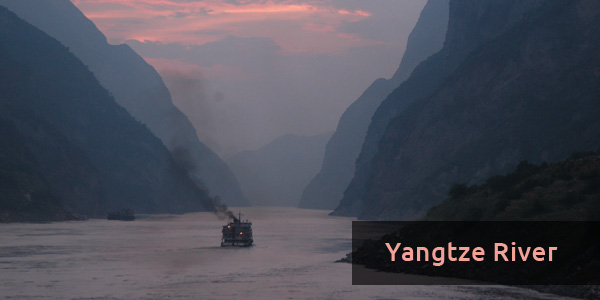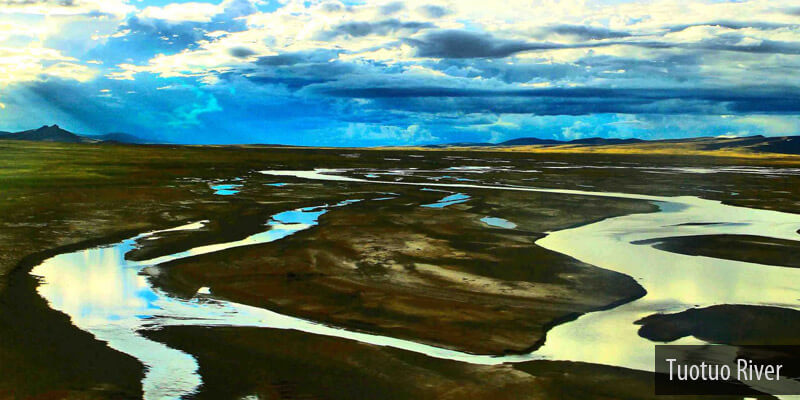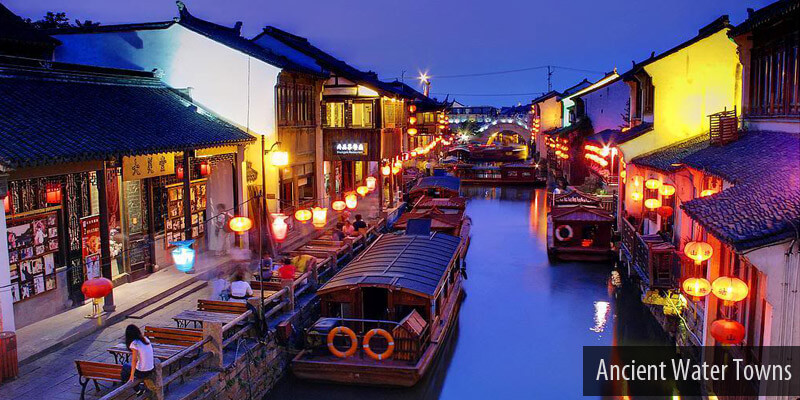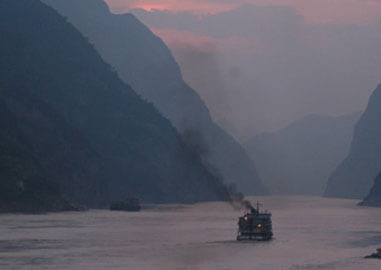
Longest River in Asia - Yangtze River Facts and Figures
Posted By KathleenAsia is home to some of the world’s longest rivers. A number of long waterways flow through the continent and provide its inhabitants with water for drinking, irrigation and the generation of hydroelectric power. In addition, many rivers serve as important transportation routes while others offer their rich resources of aquatic life and minerals. Several ancient civilizations thrived at the banks of important Asian Rivers. The most important and longest river in Asia is the Yangtze river. The following discussion provides information about this mighty water body of Asia.
| Continent | Basin Countries | Basin Area | Length |
|---|---|---|---|
| Asia | China | 1,800,000 km² (695,000 mi²) | 6,300 km (3,915 mi) |
| No. Of Tributaries | Source Elevation | Average Discharge | Mouth |
| Over 700 | 5,042 m (16,542 ft) | 31,900 m³/s (1,127,000 ft³/s) | Yellow Sea at the port of Shanghai |
Yangtze River – An Overview
The longest river of Asia and third longest river on the planet, the Yangtze measures 6,300 kilometers in length. It is the most important waterway of China, serving the country since its ancient history. It emerges from the Geladaindong Peak of the Tanggula Mountains in Qinghai. The source of the river is located at an elevation of 5,042 meters. From there begins the river’s long, adventurous journey which comes to an end near Shanghai and Jiangsu where its water joins the East China Sea.
Around one-fifth of the region of the People’s Republic of China comes under the river. Its huge river basin covers 1,808,500 square kilometers of area and houses one-third of the entire population of the country. The Yangtze delta is one of the most prosperous regions of China, contributing over twenty percent to the country’s overall GDP. The river provides water for irrigation to help the agricultural sector thrive while the world’s largest hydroelectric power station generates enormous amount of electricity. It also serves as a route for transport of vessels.
Indeed, the mighty Yangtze is a matter of pride for China. The magnificent water body offers scenic beauty to foreign tourists while the locals harness its power and use its resources to build a thriving nation.
Sections of the River
The Yangtze River is known by many other names. In fact, these names have been used by Chinese to identify different sections of the river when its source had not been determined. The most popular names of the river are listed below along with a brief description of the section defined by each name.
Chang Jiang
The river’s most common name in the country is Chang Jiang which means “Long River”. This name defines the region of the river which extends from its confluence with one of its tributaries, River Min, towards its mouth located at Shanghai. This is the lower course of Yangtze which is 2,884 kilometers long.
Chang Jiang is further classified into sub-sections which have been given different names by the locals. These include Chuan Jiang, Jing Jiang, Wan Jiang and Yangzi Jiang.
Jinsha Jiang
In the Chinese language, Jinsha Jiang means “gold sanded river”. This name defines the section of the river from Yibin to where it is joined by its tributary, River Batang. This confluence occurs in Qinghai. The section of the river defined by Jinsha Jiang is 2,308 kilometers long.
Tuotuo River
The headstream of Yangtze, flowing up to 358 kilometers from its source is known as the Tuotuo River. The name means “tearful river”. In the Mongolian language, this section is named as “Ulan Moron” which means the Red River.

Tongtian River
This name has been taken from fable: Journey to the West. It means “river passing through heaven”. Tongtian defines the section which flows from Yushu up to the river’s meeting point with River Dangqu. It was also known as the Yak River or the Winding Stream.
Importance of Yangtze in the World
The Chinese take pride in the fact that the longest river of Asia runs through their country. In fact, the Yangtze has earned several places on the list of world records. The reasons why it is famous the world over are listed below.
- After Nile and Amazon, the Yangtze River is the longest waterway flowing on earth.
- It ranks as the longest river to pass through a single country. The entire length of the Yangtze River - beginning from its source from glaciers at the Geladaindong peak to its confluence with the East China Sea – lie within the People’s Republic of China.
- In terms of the discharge volume, the Yangtze is the biggest river in the entire world. Its average discharge is 30,166 cubic meters per second while its peak dischrage reaches 110,000 cubic meters per second.
- The source of Yangtze, situated at 5,000 meters above sea level, is the highest source any river of the world has.
- The Qinghai-Tibet railway passes 100 kilometers from the source of the Yangtze River. This is the world’s highest railway.
- The largest hydroelectric power station and the largest dam in the world are built on the Yangtze River. It is known as the Three Gorges Dam.
- The world’s deepest Gorge is located on the upper section of the river. Above it are mountains as high as 4,000 meters. The cliffs at its side are as steep as 2,000 meters.
Scenic Beauty
The Yangtze River is surrounded by breathtaking scenic beauty. The sites worth watching are described below.
Source of the River
The river’s source lies at the Qinghai-Tibet plateau. This point is popularly known as the Roof of the World. It leads to lush green Mountains and steep gorges in the regions of Lisu and Naxi.
Fengdu Ghost City
Also known popularly as the Home of the Devil, it is a famous place which is situated along the course of the river. Most tourists make a stop at this point during their Yangtze cruise. It used to be an ancient town and a burial site. Although most of the city has drowned under the Three Gorges Dam, its relics are still found in the form of multiple ancient temples.
Ancient Water Towns
There are several towns located along the river’s lower reaches which are popularly known as the ancient water towns owing to the large number of small rivers and lakes located there. The famous water towns are: Zhouzhuang, Xitang, Tongli and Wuzhen.

The Three Gorges
The Yangtze is famous for the Three Gorges which are found around the middle reaches of the river. This region offers natural scenic beauty which tourists can enjoy during their cruise of this part of the river.
Importance of the River
The river has been serving China in many ways since the ancient times. The region containing the Three Gorges was home to human civilization as far back as 27,000 years. The culture of Southern China emerged from the early settlements which thrived around the banks of Yangtze. Today, the river is immensely important for the country in the following ways.
- The river is an important means of transport. It has been in use for this purpose since two centuries. Commercial vessels and steamers can travel up to Yichang which is at a distance of 1,600 kilometers from the sea. On the other hand, ship transport can be carried out up to Chongqing.
- The Yangtze River Basin is thriving region of the country which provides various resources for its prosperity. Important crops are grown in the fertile region which strengthens the agricultural sector of China. These crops contribute to seventy percent of the country’s rice and fifty percent of its grain produces. Overall, the river basin contributes forty percent to the total GDP of China.
- Seventy percent of China’s fishery production is contributed by the Yangtze.
- Various tourist attractions along the course of the river add their share to the overall earnings of the country and provide jobs to the locals in the tourism department.
- The river is home to a wide variety of organisms, including 350 species of fish and 160 species of amphibians.
- The country’s culture has evolved from the ancient civilizations which were nourished by the resources provided by the Yangtze River.
- Huge deposits of minerals surround the river. This serves as a basis for future mining projects in China which are going to add greatly to the country’s prosperity.
- Forty percent of the entire country’s power potential is offered by the Yangtze River.
- The strategic importance of the river is also notable. It is the natural divide between the northern and southern part of the People’s Republic of China.
Indeed, the Yangtze River is not only the longest river of Asia, but also one of the most important waterways of the continent.
Asia Continent - Latest Articles

Asian Culture Facts and History
Posted By JohnAsia is the world's most populated continent with the greatest diversity of culture. Asian...

Dresses in Asian Culture have Vast Variety
Posted By MariaThe continent of Asia consists of a large diversity of cultures, traditions and customs....

Longest River Of Asia
Posted By KathleenAsia is home to some of the world's longest rivers. A number of long waterways flow through...
